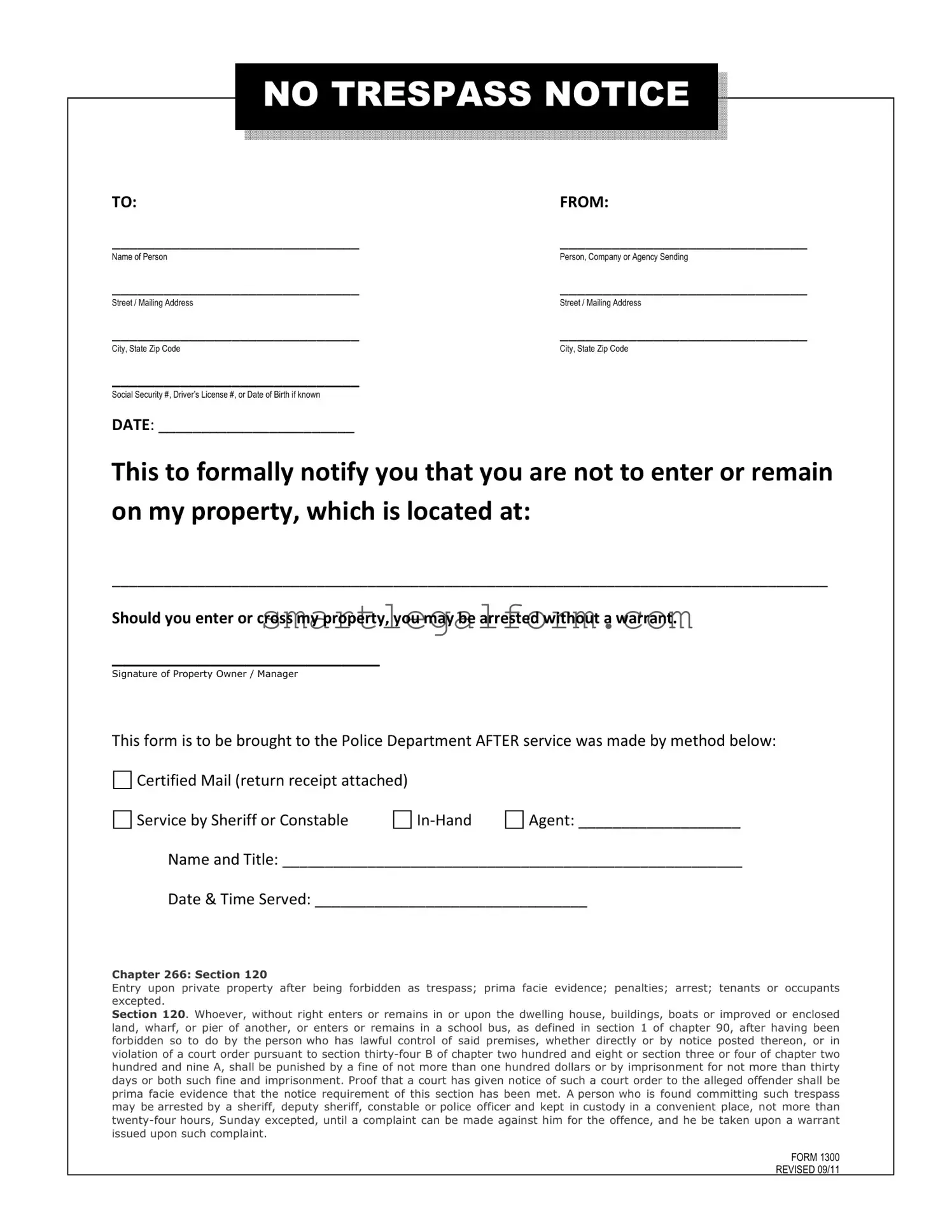TO: |
|
|
|
|
|
|
|
FROM: |
|
|
|
|
_____________________________ |
|
|
|
_____________________________ |
|
|
|
|
|
|
|
|
!" |
|
|
|
|
|
|
|
|
|
|
|
|
|
|
|
|
_____________________________ |
|
|
|
_____________________________ |
|
##"$"!! |
|
|
|
|
|
|
##"$"!! |
|
|
|
|
|
|
|
|
|
|
|
|
|
|
|
|
|
_____________________________ |
|
|
|
_____________________________ |
|
"###%"! |
|
|
|
|
|
|
"###%"! |
|
|
|
|
|
|
|
|
|
|
|
|
|
|
|
|
|
_____________________________
"$ &"#'"()*" '#+"#,"-.
DATE: _______________________
This to formally notify you that you are not to enter or remain
on my property, which is located at:
____________________________________________________________________________________
Should you enter or cross my property, you may be arrested without a warrant.
This form is to be brought to the Police Department AFTER service was made by method below:
Certified Mail (return receipt attached)
Service by Sheriff or Constable |
In-Hand |
Agent: ___________________ |
|
|
|
Name and Title: ______________________________________________________
Date & Time Served: ________________________________
! !!
! ! ! !" #$!
! !
%&
'!
( '
! !)!
% !! ! )

